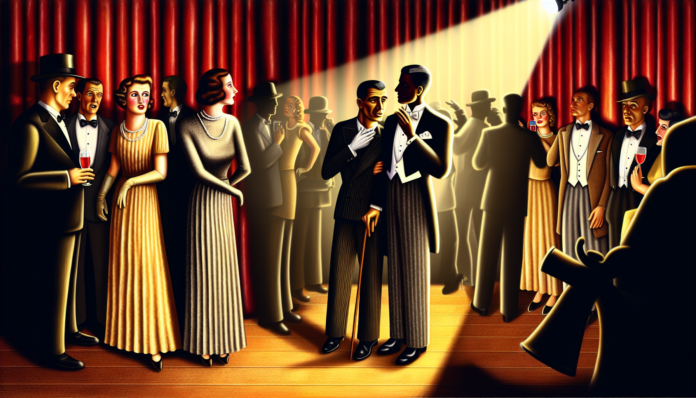Introduction
When one thinks of Hollywood’s Golden Age, images of glamorous starlets and dashing leading men often come to mind, encapsulated in a weave of romance and intrigue. Among these icons was Jean Harlow, the “blonde bombshell” of the 1930s, whose widely publicized romance with William Powell and subsequent relationships with various men became the fodder for tantalizing gossip magazines. Ironically, beneath the glitz and glam lay a troubling truth about these relationships, shadowed by the harsh societal norms of the time.
The 1930s were defined by strict moral attitudes, where public and private lives clashed spectacularly. The advent of the Hays Code in 1934, designed to regulate what could be shown in films, reflected the conservative values of the era, ushering in a culture that often shamed women while idolizing male counterparts. Harlow’s affairs and romantic escapades illustrated not only personal complications but also the broader implications of celebrity culture and morality that echo even today.
The Scandal
The scandal surrounding Jean Harlow primarily revolved around her tumultuous relationships and the media’s relentless scrutiny. Her affair with the actor Paul Bern—who she married briefly—created a whirlwind of headlines that culminated in tragedy when Bern was found dead in their home in 1932. Rumors swirled that Harlow had poisoned Bern, though the official cause was ruled as suicide. This event opened the floodgates for gossip, with tabloids leaving no stone unturned as they painted Harlow as the femme fatale.
Quotes from the time reflect a culture eager to sensationalize: one prominent gossip columnist famously stated, “Harlow’s the kind of girl who has every man’s heart—and then breaks it.” Such characterizations were not uncommon; female celebrities were often vilified while their male counterparts went virtually unscathed. Harlow, despite her fame, faced a barrage of public scrutiny over her relationships.
- Key Events:
- Married Paul Bern in 1932; he died months later.
- Relationships with leading men like William Powell and Clark Gable sparked numerous off-screen rumors.
- Consistently portrayed as a seductress in the eyes of the media.
Moral and Cultural Analysis
The societal reaction to Harlow’s scandals was marked by a heavy dose of hypocrisy. While male figures like Powell enjoyed reputations as cinematic heroes, Harlow was frequently reduced to her romantic entanglements. Her struggle symbolized the double standards prevalent during Hollywood’s Golden Age, where women faced greater backlash for their sexual freedoms.
Consequences for Harlow were severe; not only did she endure personal loss, but her public persona took a hit as she became an emblem of the fallen woman. The press exploited her tragedy, and although she continued to work, her personal life remained a subject of cruel speculation.
Had these events unfolded in today’s social climate, the narrative would differ significantly. Modern audiences have begun to champion sexual autonomy and challenge misogynistic portrayals. Harlow might be celebrated for her agency, rather than vilified, and the discussion surrounding her life would likely focus on the injustice and pressure exerted by the patriarchal structures of Hollywood, rather than sensational undertones.
In contemporary terms, Harlow’s experience can resonate with ongoing conversations about toxic media culture and the psychiatric toll on public figures, particularly women. The evolution of societal attitudes means that today, scandals like Harlow’s would likely be met with a call for empathy and justice rather than relentless scrutiny.
Thus, the golden age of Hollywood, with its intoxicating mix of fame, morality, and scandal, invites modern audiences to reflect not only on the lives of its stars but also on the broader cultural dynamics that continue to shape relationships between fame and personal integrity.

